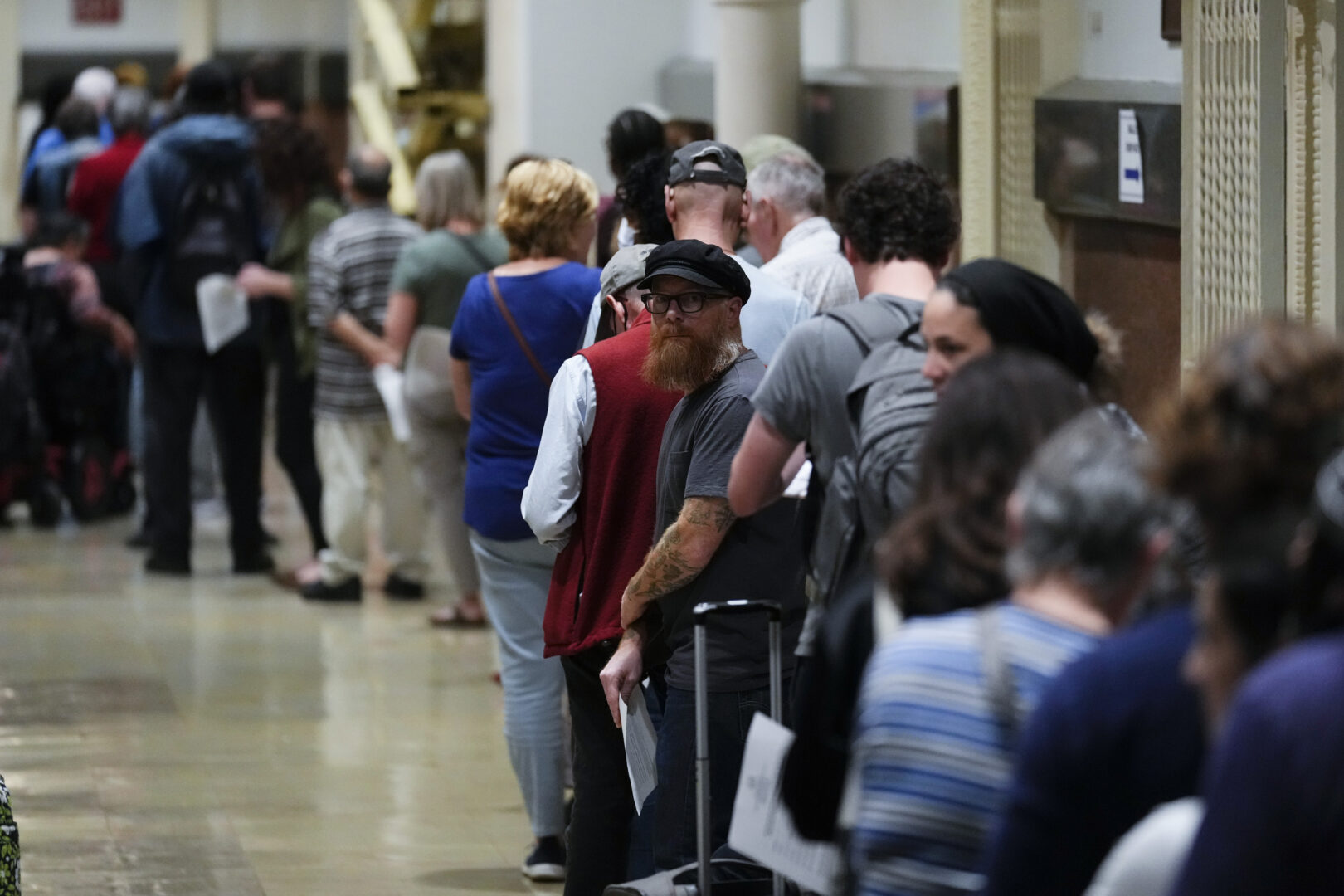
Voters wait in line to make a correction to their ballots for the midterm elections at City Hall in Philadelphia, Monday, Nov. 7, 2022. (AP Photo/Matt Rourke)

Voters wait in line to make a correction to their ballots for the midterm elections at City Hall in Philadelphia, Monday, Nov. 7, 2022. (AP Photo/Matt Rourke)

Voters wait in line to make a correction to their ballots for the midterm elections at City Hall in Philadelphia, Monday, Nov. 7, 2022. (AP Photo/Matt Rourke)
The nationalization of voting behavior has become a hot topic among political analysts in recent years, with many experts arguing that American voters are increasingly casting their ballots based on their party affiliation and ideology, rather than local issues or individual candidates. A recent study from Franklin & Marshall College delves deeper into this phenomenon by examining split-district voting in Pennsylvania state house elections, and analyzing voter behavior over time.
Using data from the 2022 midterm and 1992 presidential races as points of comparison, the study found an increasing trend toward nationalized voting behavior in Pennsylvania. The analysis of district-level returns shows far fewer split-district returns in 2022 compared to 1992, which indicates more voters are aligning their votes for national offices with their vote for state offices.
Berwood Yost, director of F&M’s Center for Opinion Research, authored the report.
“One in seven state house districts had a split result. So, like 14% of the state house districts. In 1992, if we did the same analysis, 43% produced candidates from different parties,” Yost said.
The study leaves open the question of why this trend is occurring, and whether it is driven by voter preferences or systemic constraints. Yost notes his findings challenge the notion that messaging from congressional and state legislative campaigns needs to be nationalized in order to achieve nationalized voting behavior. Instead, the report suggests that structural features like “federalism, the two-party system, primaries, gerrymandered districts” may be more influential.
Yost noted another reason for this behavior is the national media landscape.
“If all the information people are getting is from national sources focused on national issues, it certainly can make things seem like that’s all people are talking about, and that’s all they’re interested in,” Yost said.
The report suggested the composition of electoral districts also influenced this behavior. The study found the distribution of partisan registration within the state’s districts underscores the lack of competitiveness, with the majority of districts having a voter registration gap of more than ten points.

Get insights into WITF’s newsroom and an invitation to join in the pursuit of trustworthy journalism.
The days of journalism’s one-way street of simply producing stories for the public have long been over. Now, it’s time to find better ways to interact with you and ensure we meet your high standards of what a credible media organization should be.